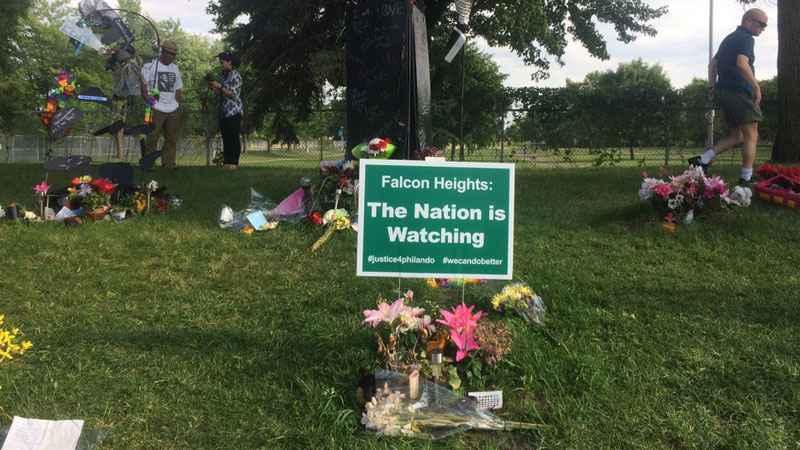AUGUST 29, 2020 – Yesterday, for the 1,000th time over the past four years, I drove by the site where a policeman shot Philando Castile less than a half mile from my neighborhood—a quiet, leafy haven of white liberalism. My wife and I know a fair amount about Mr. Castile—our oldest son is close friends with Philando’s best friend and co-worker (John Thompson, Democratic candidate for state legislature).
As traffic yesterday slowed, then stopped, I wound up in front of the dynamic roadside shrine that thrives at the tragic site—signs, flowers, paintings, other remembrances of a man who was much loved and admired by friends and family. (We met many of them at packed town hall meetings in the wake of the shooting; John Thompson was among the most outspoken.) While I waited for the light ahead to change, I pondered Philando’s death and all that followed—the family’s grief; the angst that consumed us residents; meetings where citizens excoriated police, mayor and council members; Blacks from next-door-St. Paul who told their wrenching stories of discrimination by police generally and our town cops in particular; the independent investigation of the police action, conducted by a lawyer with whom I’ve worked very closely on other matters, and the cop’s criminal trial.
The light turned green. As I proceeded to our alleyway, I contemplated the killing of George Floyd, Jr. and so many Black people before and since. I thought of the white focus on images of urban looting and violence—symptoms produced by a mix of (a) people whose anger arises from chronic frustration; (b) thugs and opportunists; (c) “Let’s Party!” sorts; and (d) worst of all, outsider whites hell-bent on inciting violence to accelerate authoritarianism. Only a total police state, I thought, can prevent common symptoms arising from multiple sources.
I shut off the engine and sat in silence. My thoughts settled on the trial of the police officer who’d shot Philando; on Philando’s mother and her grief after the officer’s acquittal; the cop, who, though relieved, will be forever haunted by his moment of panic.
I imagined the encounter between cop and mother—any cop and his victim’s mother. I heard the mother’s resounding rage and wailing grief. I saw the cop cower, then run for cover under the roof of a nearly all-white police union hall.
But then another image formed. I imagined the mother’s simple, tearful plea to the officer, police chief, mayor, council . . . to the white establishment: “All I want is an apology. No excuses, no explanations, no self-justification, no ‘Yeah, but he had a warrant out for his arrest,’ no ‘He had a gun’—especially no ‘He had a gun,’ when you refuse steadfastly to enact and enforce strict gun control laws—just . . . an . . . apology.”
I alighted from the car and went about my business . . . before reports tell us the same old story with yet another new name.
We need a new story; one with a fresh beginning; one that starts with “A” for “Apology.”
(Remember to subscribe to this blog and receive notifications of new posts by email.)
© 2020 by Eric Nilsson
